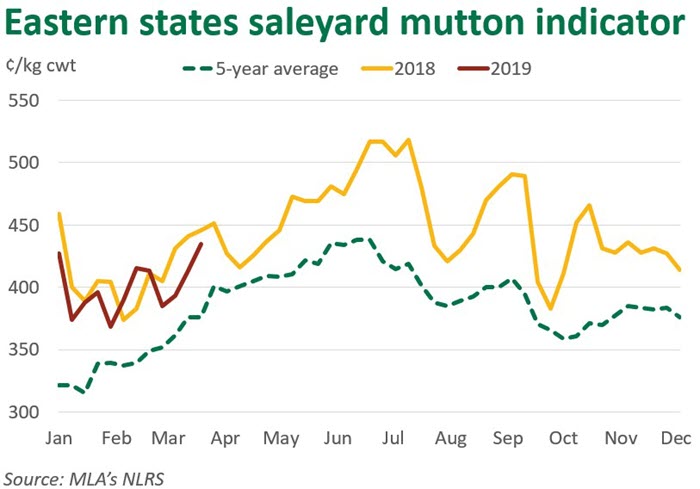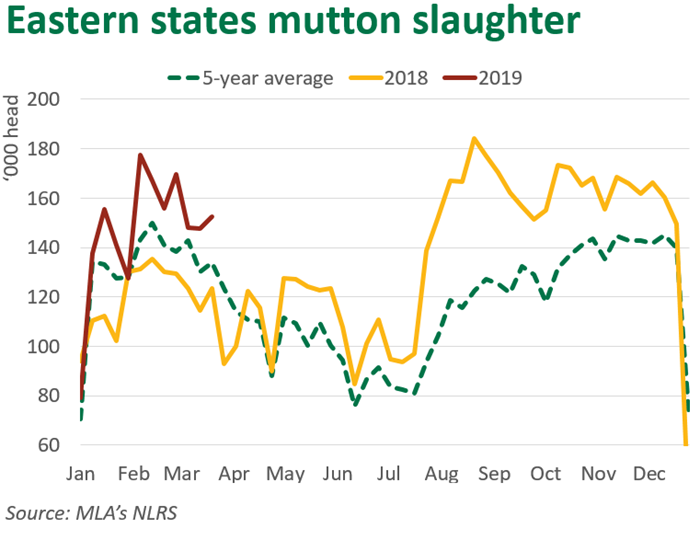28 March 2019
Despite elevated supply, mutton prices managed to reach a 2019 high this week.
For the week ending 26 March, the eastern states saleyard mutton indicator averaged 435¢/kg carcase weight (cwt), an increase of 9% on the previous week, but down 1% year-on-year.

In a promising sign for producers, the price gains come despite the fact sheep remain well supplied. For the week ending 22 March, eastern states sheep slaughter totalled 153,000 head, up 3% week-on-week and up 24% year-on-year.
Year-to-date sheep slaughter across the eastern states has now surpassed 1.7 million head, up 22% on 2018 and up 37% over a two-year period.
Nationally, year-to-date sheep yardings have been relatively consistent with 2018 numbers across most states. However, yardings fell 13% on 2018 in WA, while NSW saw a 14% rise.

Increased sheep yardings in NSW have implications for future lamb supply, with unusually high ewe turn-off indicating a reduction in breeding stock. Home to roughly 40% of the national flock, NSW generally fills an important gap in national lamb supply – that being the winter months preceding the southern spring flush.
Despite many signs pointing to an impending shortage, lamb supply remains consistent on 2018 numbers, with national yardings for the week ending 23 March up 14% week-on-week. Eastern states lamb slaughter rose 13% on the previous week, totalling 390,000 head, up 1% on the same week in 2018.
Lamb prices also rose, with the Eastern States Trade Lamb Indicator averaging 665¢/kg cwt on 26 March, which is up 3% on the week prior and up 8% year-on-year. The price premiums for heavy lambs, relative to trade lambs that were apparent for much of 2018 have eased in recent weeks, with heavy lambs averaging 652¢/kg cwt.
Another interesting trend so far in 2019 has been strengthening prices for Merino lambs. From 2014-2018, saleyard prices for Merino lambs were on average 10% lower (on a ¢/kg basis) than the trade lamb indicator. So far in 2019, this gap has narrowed to a 6% discount (on average), possibly reflecting historically strong wool prices.


